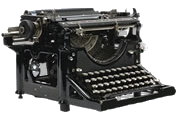The three great military monarchies which have lately fallen to pieces – Russian, Austro-Hungarian and German – were all based upon an aristocracy of large landed properties, whereas the other European countries had become parliamentary and democratic states. Europe was thus divided between two political orders, founded on two social orders, in fact, into two different worlds between which the river Elbe was approximately the boundary…
The war proved a decisive test of the stability of the two social orders; the democratic states went through it without flinching, the monarchies which had which had engendered the war in the hope of strengthening their position have gone under; from their defeat has sprung the revolution, which is overthrowing all aristocracies.
Click here to read a 1916 VANITY FAIR article about how the war had affected the British upper class.
